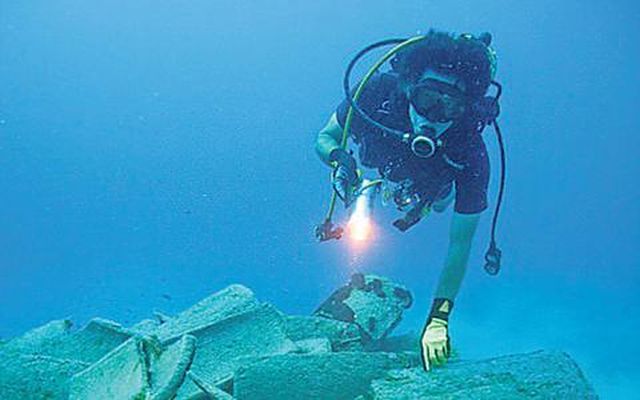Turkish archaeologists have discovered a sunken Minoan ship in the Gulf of Hisaronu, opposite the islands of Rhodes and Kos. It departed from Crete nearly 4,000 years ago, but where to?
Perhaps it had set off to the ancient city of Knidos on the west coast of Asia Minor, which, as we know from archaeological finds, had been inhabited since the Minoan civilization. It might never be known exactly where the ship should have arrived, but thanks to its hull and cargo, scientists will gain valuable information about the era.
Not many sunken Minoan ships have been discovered. In addition to the one near the coast of Asia Minor, another ship that dates back to the year 1800 BC is being examined by Elpida Hadzidaki of Crete, near the island of Psira.
The coasts of Asia Minor have been explored for years by Dokuz Eylyul University in Izmir and in particular by the Institute for Marine Science and Technology. Dr. Abdurahman Aaron Ozdash, head of excavations, underlines that the programme in Marmaris started in 2007 and lasted four years. This was the oldest ship discovered in the region of Mugla and ancient Halicarnassus (now Bodrum).

Nearly 100 sunken ships have been discovered to this day in total. About 25 of them have been examined and nearly as many architectural remains that appear to have been part of ancient harbours and harbour works.
These date back to the Bronze Age and the Ottoman period. The finds include amphorae, plates, columns, glass and stone items as well as 400 anchors. The ships were not only commercial but also military.
The Minoan ship had sunk to a depth of 40 metres and remained there for centuries. Archaeologists discovered its traces in the sand and its cargo from the time of the Minoan civilization. The first study continued for a month and a half and the first statements were made after its completion. Another cycle of examinations will follow, which will allow dating it with greater accuracy.
The conservation of the findings is carried out by a team of archaeologists conducting excavations in the Museum of Halicarnassus. At the same time, they have prepared a map of all underwater finds in that area and the studies will continue this year too.
Due to its location, Crete quickly had become a major trading and sailing power. There were many ports on the island and countless Cretan ships ploughed the waters of the Aegean Sea. They sailed to the Cycladic Islands and reached the coasts of Anatolia, Egypt, Troy and Cyprus. There Minoans were selling their goods, such as olive oil, honey, wine, vessels and jewellery, bringing to Crete bronze, silver, gold, ivory and precious stones.